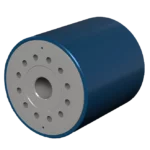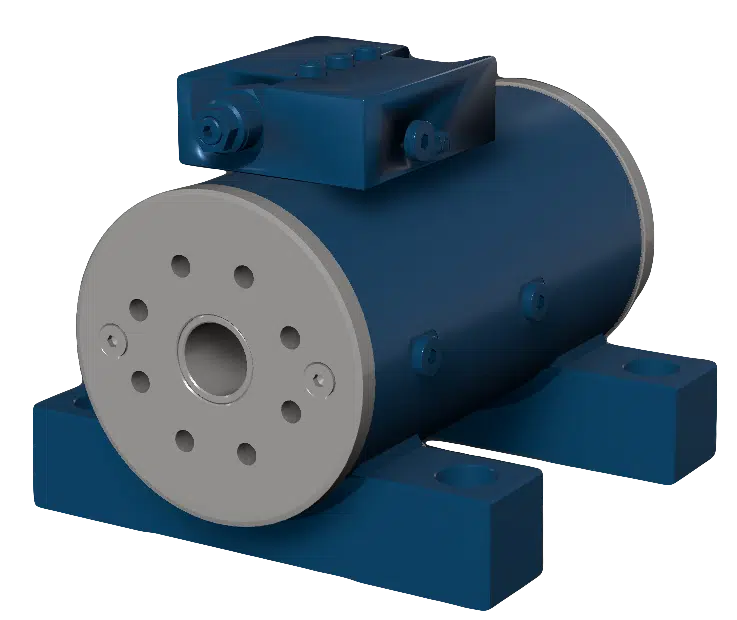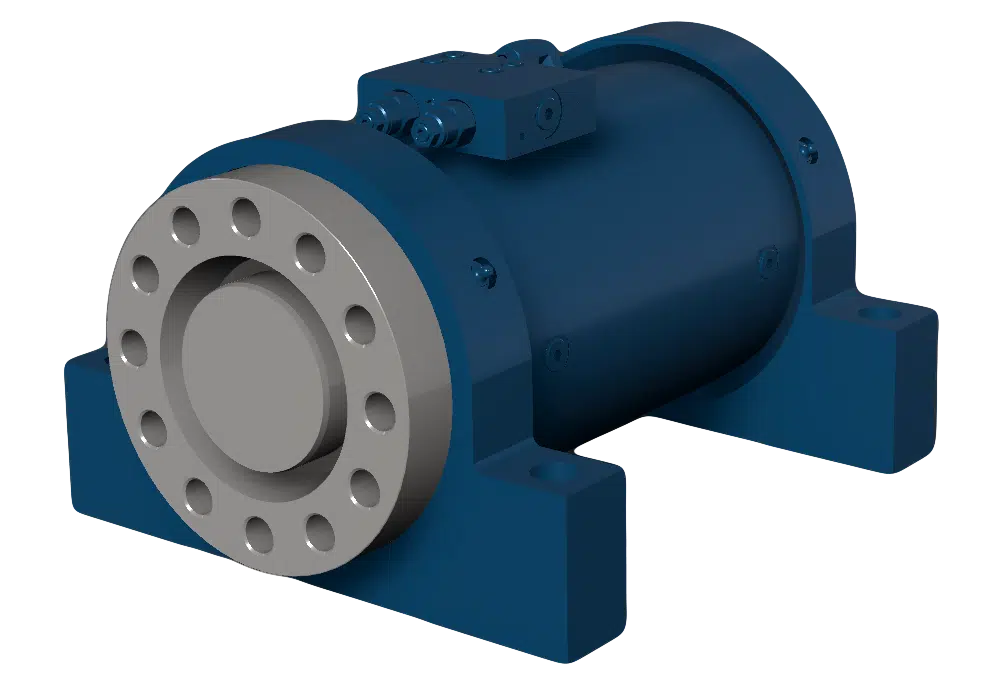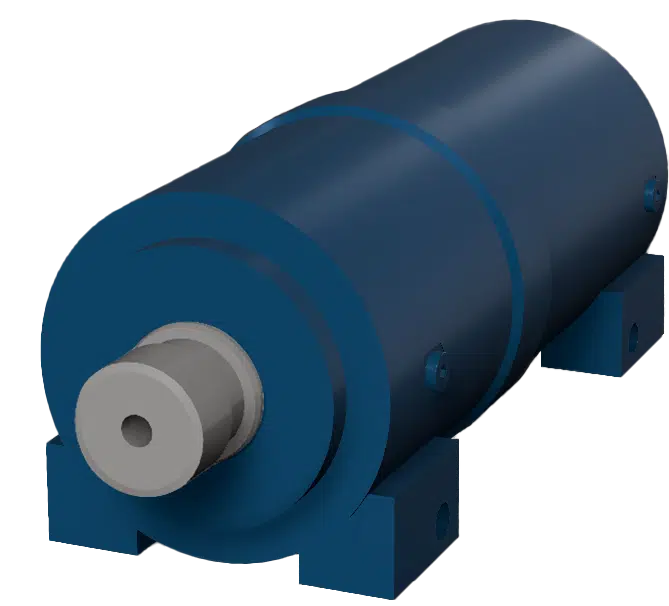IC-Fluid Power recently launched its new IC Series of helical spline rotary actuators. Though the company has been providing custom rotary actuators made by Eckart since 1989 for demanding applications, it has received numerous requests for more standardized, drop-in replacement actuators for various systems. The new standardized IC Series shortens lead times so OEMs can build and repair equipment faster.
“IC-Fluid had received many inquiries for Helac replacements, but we were not able to offer replacements through Eckart, and no viable alternatives existed until recently,” said Ben Hunger, vice president of IC-Fluid.
The four new models offer different sizes, mounting styles, torque, and rotation.
| IC10
|
|
| IC20
|
|
| IC30
|
|
| IC40
|
|
Helical rotary actuators have been around for decades, but IC-Fluid noticed an uptick in demand for machinery used in harsh environments.
“We see the market growing as a whole,” said Hunger. “Customers see the advantages of the compact and low-maintenance design of rotary actuators over linkages or having added degrees of movement in their equipment that did not exist before.”
There are some significant differences between the Eckart and IC Series actuators. The Eckart actuator is designed much more robustly, which includes:
- High-quality steels that are verified at the Eckart factory upon receipt using a spectrometer
- Tight tolerances that result in lower backlash as low as 0.083° (backlash is the space between the gears that gives a “wobble” effect to whatever is attached)
- Four-point contact bearings instead of wear bands
- Nitrocarburized and oxidated parts
Furthermore, the Eckart actuators can be highly customized — even with just one piece.
“While Eckart does offer some standardized actuators which we stock, we found that there is business which we’ve left on the table by not offering a drop-in replacement for Helac actuators,” said Hunger. “The IC series actuators are mostly standardized, and we try to keep these in stock in various versions.”
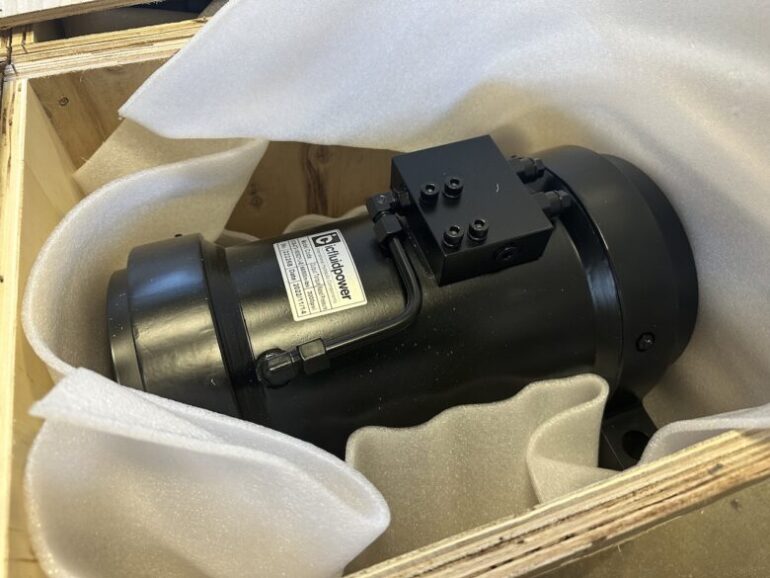
Rotary actuators are used in mobile machinery, marine vessels, material handling equipment, and almost any application that requires a compact, high-torque rotational joint. The helical spline design uses a piston and sliding helical gear to convert linear motion to rotational motion to rotate booms, arms, buckets, or tipping devices. The helical spline rotary actuators are fully enclosed in a housing, making them suitable for contamination-prone environments. Some specific applications for the new IC Series include:
- Drill rigs in mining applications, such as rock excavation (IC30 Series): The actuator manipulates the drill arm and has a 360° rotation, enabling a full range of movement where the drill arm might need to create blast holes from the ground to the ceiling.
- Agriculture machinery, such as sprayers or spreaders (IC10 and IC20 Series): Helical gear actuators create rotational movement and control for just about any farm machinery, from folding attachments for on-road transportation to positioning the nozzle of a mobile sprayer in place.
- Tippers in waste management to help empty refuse bins and receptacles (IC40 Series): In the refuse/waste and recycling tipper market, standard degrees of rotation for tippers include 135° or 180°. The IC40 Series, however, offers rotations of 200° and 220°, adding more extension to the tipper to dump the components of the waste receptacle entirely.
- Forestry equipment, such as tree care handling equipment (IC10 Series): Rotary actuators are typically used in forest and felling equipment to move components, such as grapplers or boom arms, in tree removal and timber harvesting applications.
- Construction equipment, such as saw machines (IC10 Series): The IC10 actuator can also be used in construction equipment, such as a powerful, ride-on floor saw for large projects on airport runways and highways. In this application, the actuator is used for steering.
The helical spline design is simpler and can require lower maintenance and safety benefits than other designs.
“Compared to the primary alternative, which often involves a linkage or gears with chain possibly combined with hydraulic linear cylinders, the main safety benefit is reduced pinch points and reduced failure modes,” said Hunger.
IC-Fluid Power
icfluid.com
Filed Under: Components Oil Coolers, Cylinders & Actuators, Mobile Hydraulic Tips
